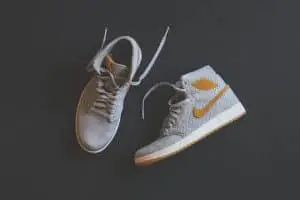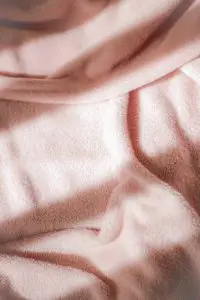Western fashion history dates back to some thousands of years ago when clothing evolved from solely for covering oneself into an element of fashion. This article will sequentially explore the history of western fashion to gain a deep insight into its evolution.
Western Fashion History: 5th – 15th century
From the mid-fifth century up until the eleventh century, the Anglo-Saxon dress was what was worn by humans. When Anglo-Saxon kingdoms converted to Christianity in the seventh century, religious art and symbols influenced costume fashion.
As Christianity spread and Anglo-Saxon England prospered, clothing and accessories specific to the military and other groups emerged. In the tenth and eleventh centuries, England increased the quantity and variety of textiles, clothing, and accessories available to the public.
During the thirteenth century, when blue became a colour used to dye clothes, the kings of France adopted blue as their heraldic colour.
Western fashion in the fourteenth century marked the beginning of “Tailoring” and the making of clothes that are fitted to the human form instead of draping them. The use of lacing and buttons also provided a better fit. By the end of the fourteenth century, men’s western fashion evolved from a tunic (or kirtle) into a tailored top that was a little below the waist.
In the fifteenth century, western fashion comprised dresses with sweeping floor-length sleeves. Hats and hoods also increased in importance. The fifteenth century marked the beginning of regional variations of clothing, textiles, and even more complicated clothing styles in western fashion history.
Western Fashion History: 16t Century (1500-1600)
In the first half of this century, western fashion consisted of dresses with wide sleeves which were puffed, folded backwards, and clipped to reveal contrasting linings.
Western fashion in this century took a new turn and was distinctly characterized by the luxury of fashion and clothing. Gold and silver, which were made into fine threads, were used to make the cloth of gold.
In the second half of this century, western fashion was characterized by increased opulence. Embroidery and surface ornamentation grew in importance, were used more lavishly and were more prominent in the style of this century.
The characteristics of women’s dresses were a narrow v-lined shape of the waist, with increased width and volume in the sleeves and skirts. Men’s clothing generally consisted of knee-length breeches with broad shoulders.
In western fashion history, the ruff is a distinct characteristic of the second half of the sixteenth century. The ruff, which was a plain ruffle attached to the neckline of the bodice of a dress, steadily became extravagant separate clothing worn on dresses. It was cut, heavily starched, and well-ironed to form crisp and precise folds, then heavily embroidered or lined with lace.
Western fashion in this century was also characterized by a significant increase in the variation of textiles, sewn clothing, and their overall complexity.
Western fashion history: 17th century (1600-1700)
In the early 1600s, western fashion consisted of fashion from the late sixteenth century. Men still wore tops, called breeches, which were knee-length. The tops were embroidered or decorated with colourful fabrics, with buttons to make it a snug fit.
Women’s dresses were made tastefully and meticulously but were rather strange. The dresses were generally plain and picturesque. They were strange because they somewhat contrasted the overly elaborate style of the dresses in the previous century.
A distinct characteristic of this century in western fashion history is the wearing of wigs by prominent figures and men and women of substance in society. These wigs were often white. Men wore these white wigs, and women either wore them or powdered their hair white to achieve the look. The wearing of white wigs was essential to show a high-ranking status in society.
Another significant characteristic of western fashion in this century is the distinction between formal and casual wear. The full dress was worn to formal places like the court and other proper gatherings, while less complicated clothes were worn as everyday or daytime clothes.
Western fashion history in this century was also characterized by people willing to dress in the latest trends or styles. No one wanted to be seen in dresses considered out-of-date or out-of-style. Thus, trends became one of the major reasons people wore clothes.
Western Fashion History: 18th century (1700-1800)
The western fashion of the late seventeenth century carried on into the early eighteenth century. Men still wore breeches, and women wore relatively plain and picturesque dresses.
In the mid-eighteenth century, the differences between the French and English styles had become very prominent. The French style was formal, elaborate, and rich in colour and design. English dresses weren’t as overly formal, with simple fabrics made from durable and inexpensive materials. The French also seemed to prefer indoor portraits where they could display luxury, while the English preferred outdoor scenes for portraits.
Western fashion progressed when machines were later invented for spinning and weaving, making more fabrics. This made trending clothes more readily available to the general public, excluding enslaved people and the very poor.
In western fashion history, men wore knee-length breeches with a waistcoat and an outer coat throughout the eighteenth century. These clothing varied in length and size over the century. Early into the century, coats were wide and full but began to get thinner as the century progressed. Formal coats and vests were heavily embroidered or decorated with elaborate and stylish fabrics. At the same time, women’s skirts gradually evolved over the century from full skirts with sheer volume into something simpler.
Western Fashion History: 19th century (1800-1900)
Western fashion in the nineteenth century was identified by the use of corset-pinched waistlines in the bodice of women’s dresses. These dresses accentuated narrow waists, which led down to full skirts. Men started to wear three-piece suits with waistcoats and outer coats as formal wear.
Industrialization caused more women to be brought into the textile workforce due to the need for less expensive and mass production of fabrics and clothing. This fulfilled the market demand for inexpensive ready-to-wear clothing.
Western fashion in this century was represented by a ubiquitous high standing collar and full cone-shaped skirts that were wide at the bottom. Men’s clothing evolved from elaborately and colourfully designed three-piece suits into ones of darker colours.
Western fashion history took a new turn when haute couture was introduced halfway through the nineteenth century.
Charles Frederick Worth
Charles Frederick Worth, an English fashion designer, is considered by many fashion historians to be the father of haute couture. The history of western fashion was said to have undergone a revolution upon the introduction of haute couture.
Charles Worth’s distinct fashion style attracted royalty and well-to-do individuals across Europe and England. He made the nineteenth-century dress more suitable for everyday life.
Charles worth revolutionized western fashion history again by being the first to use live models to show off clothes to clients (they typically used dolls), thereby inventing the fashion show. He was also the first to sew branded labels into his clothing. The house of worth, his fashion company, became a place where people from far and near gathered to have consultations and fitted trendy dresses.
Western Fashion History: 20th Century – Present (1900-present)
The western fashion history of the twentieth century began with a gradual abandonment of the corset in the early years. Many fashion brands we know today were established in this century. Branded clothes and other fashion accessories became increasingly popular and were generally more expensive.
The 1910s
In the 1910s, rich and exotic opulent dresses were replaced with moderately styled garments which were simple and practical. Men’s trousers were ankle-length, while women’s skirts rose from sweeping floor-length to well above the ankle. The trending hairstyle was a bob.
The 1920s
In the 1920s, men began to wear less formal daily attire, and sportswear became increasingly popular. Women began to wear clothing that showed more arms and legs.
The 1930s – 1950s
In the 1930s-1950s, artificial fibres, especially rayon and viscose, began to be used to create linings and lingerie.
The 1960s
Western fashion in the 1960s was a series of trend breakers and the setting of new trends. False eyelashes and shimmery eyeshadows became very popular. The widely popular bikini came into fashion after being featured in the musical beach party.
Western fashion history in the 1960s also recorded the production of suits in bright and flashy colours. Ties were five inches wide with a variety of prints, stripes, and patterns. Men’s casual wear was comprised of button-down shirts and slacks. Mini-skirts and mini-dresses, which went above the knees, also became popular in women’s fashion.
The 1970s
Western fashion in the 1970s brought about the wearing of extremely brief, tight-fitting shorts, which was a fashion trend for teenage girls and young women. Platform shoes with 2-4 inch soles became the style for both men and women. The fitted blazer was also a trend for both sexes. Men’s fashion consisted of broadened and more colourful ties, wide-legged denim, and velvet trousers. Men’s hats were replaced with bandanas.
The 1980s – 1990s
In the 1980s, western fashion comprised cut-off crop-tops and gym wear, basically aerobic clothing. In the 1990s, grunge fashion became popular but was soon replaced by retro fashion in the late 1990s. In the mid-1990s, denim jeans became popular among teenage girls and young women.
The late 1990s – Early 2000s
Corduroy fabrics became popular in the late 1990s and continued as a trend into the early 2000s, although their popularity was inconsistent. Spaghetti tops, Capri pants, and denim wash also gained popularity in the late 1990s into the early 2000s.
Conclusion
It can be seen from the article that western fashion has greatly evolved. There have been various trends (most of which began in the twentieth century) that led to the current fashion styles that are present today. We hope that this article provides you with insight into Western Fashion History and tells you all you need to know about it.







